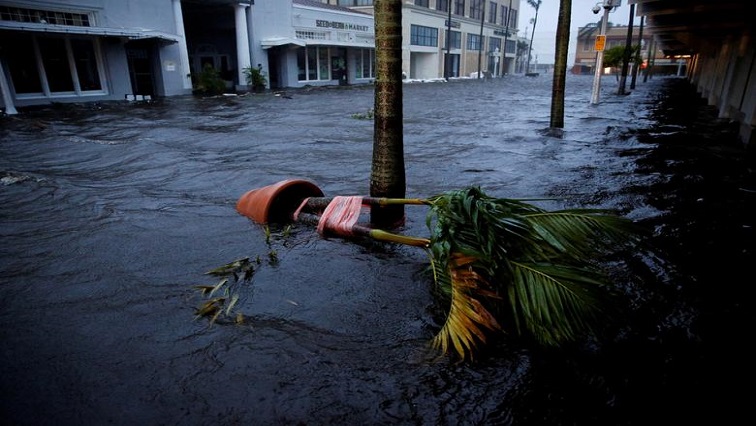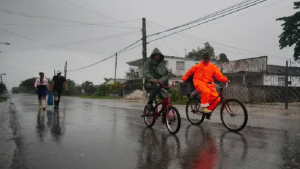Florida State Governor Ron DeSantis has announced the deployment of 7 000 National Guard troops to lead rescue operations in flood zones. One of the most dangerous storms to hit the US in years has left millions of homes without power and floodwaters surging inland.
Ian blasted ashore at the barrier island of Cayo Costa on Wednesday afternoon as a Category 4 hurricane with maximum sustained winds of 241 kph. An unspecified number of people were stranded after choosing to ride it out at home rather than heed evacuation orders, Florida Governor Ron DeSantis said.
In the early morning hours after it passed, rescue workers and residents in hard-hit areas hunted for family and friends as trees, debris and power lines covered roads and standing water washed over the ground. The search was made more difficult as cell phone services were often cut.
“Over 100 miles per hour wind gusts were sustained for hours. My son went out into the back garden and there is a very large limb from an oak tree and he said he cannot believe how lucky we are because if it hit the house it would have taken out the kitchen,” says one of the residents in Florida, Cheryl Burginton.
“A lot of down trees, a lot of flooding everywhere. We are trying to get a hold of my daughter,” said Terri Byrd as she satin a vehicle in a Walmart parking lot trying to get cell service after spending the night at an elementary school in Venice.
Local power companies said more than 2.4 million homes and businesses in Florida were without power early on Thursday after being hit by the storm. Some utilities had started to restore customers now that the storm has passed southern Florida but the number of outages increased as the storm moved across Florida.
Florida Power & Light Co (FPL) mobilized more than 13 000 personnel to support power restoration efforts. FPL spokesman Dave Reuter told CNN crews had already restored power to about 700 000 customers, although about 1.1 million customers remain without electricity. Crews will head out when they can safely assess the extent of the damage and where power can be restored, but if infrastructure needs to be rebuilt it could take weeks.
The NHC says Ian was expected to reach the Atlantic Coast on Thursday afternoon. It continued to unleash drenching rains as it crept farther inland, threatening to bring more extensive flooding. Up to 76 cm of rain was forecast to fall on parts of central Florida.
Florida’s south western shoreline, dotted with sandy beaches, coastal towns and mobile home parks, was rapidly transformed into a disaster zone as the storm hit. Small residential areas off of Highway 41 were left in a shambles. A lot in front of a grocery store in Venice became a lake, with waters reaching the trunks of some the cars parked there.
Communications were nearly impossible in many spots. Video images of the storm’s fury on local TV and social media showed flood water nearly reaching rooftops in some communities, sweeping away cars and the ruins of homes as palm trees were bent almost in half. Many mobile home residents took refuge in local schools and other facilities converted to emergency shelters.
The area’s numerous assisted-living facilities were mostly evacuated too. DeSantis said Ian had generated life-threatening storm surges waves of wind-driven seawater rushing in along the coast of up to 3.7 meters in some places.
“This is a storm that we will talk about for many years to come, an historic event,” says Ken Graham, director of the National Weather Service.
The FLASH FLOOD EMERGENCY has been extended until 11:45 AM EDT for Little Wekiva. Water levels have now reached around 31ft! This is a DANGEROUS situation. Seek higher ground! https://t.co/MOS5aqLp4f
— NWS Melbourne (@NWSMelbourne) September 29, 2022





